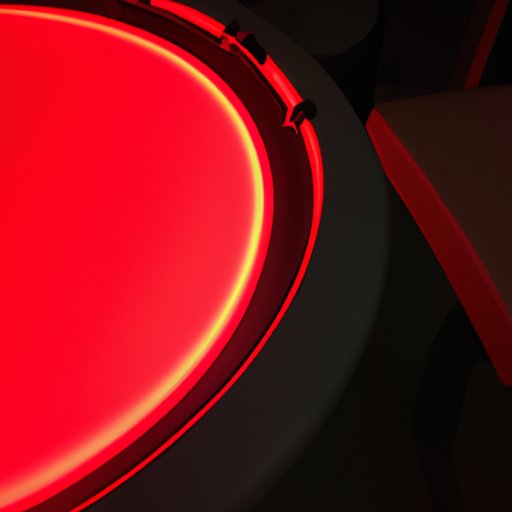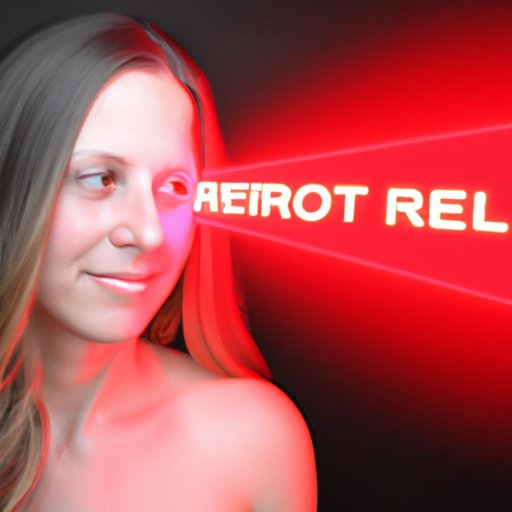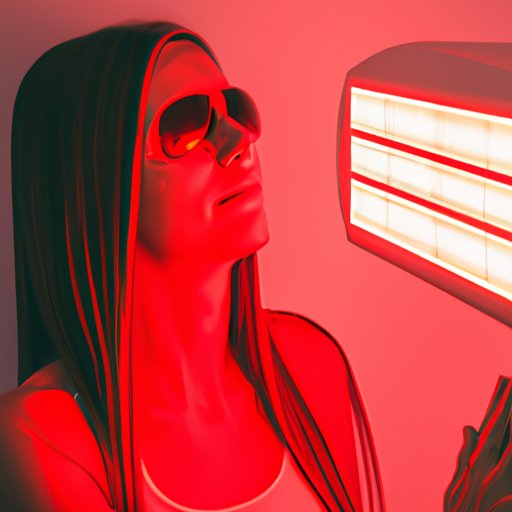Introduction
Red light therapy (RLT) is a non-invasive therapeutic treatment that uses low-level light energy to promote healing, reduce inflammation, and improve overall health and wellness. It is also known as photobiomodulation or low-level light therapy and has been used for decades to treat a variety of medical conditions. In recent years, there has been a resurgence in the use of RLT as an alternative form of therapy for a wide range of ailments, from skin problems to muscle pain.

Exploring the Science Behind Red Light Therapy
At its core, red light therapy is based on the science of photobiomodulation. Photobiomodulation is the process by which light is absorbed by cells in the body and converted into chemical energy. This energy is then used to stimulate cell growth, repair damaged tissue, and reduce inflammation. The exact mechanisms of how this occurs are still being studied, but the basic principles are well understood.
The most important factor in understanding how RLT works is understanding how light interacts with the body. Different types of light have different effects on the body. Red and near-infrared light, for example, are able to penetrate deeply into the skin and muscle tissue, stimulating the production of energy at the cellular level. UV light, on the other hand, cannot penetrate beyond the surface layers of the skin, so its effects are limited to the skin itself.
How Red Light Therapy Improves Health and Wellness
The beneficial effects of red light therapy have been studied in a number of areas, including skin health, wound healing, muscle pain, and joint stiffness. Studies have shown that RLT can significantly improve skin health by reducing wrinkles, fine lines, and age spots. It can also help speed up the healing process of wounds and reduce inflammation.
RLT has also been found to be effective in treating muscle pain and joint stiffness. Studies have shown that RLT can reduce inflammation and improve circulation, which can help reduce pain and improve mobility. Additionally, RLT can help improve sleep quality and mood, as well as reduce stress levels.

Deciphering the Benefits of Red Light Therapy
Red light therapy is a safe and effective way to improve overall health and wellness. Studies have shown that it can reduce inflammation, improve sleep quality, enhance mood, and even help with skin issues such as wrinkles and age spots. Additionally, RLT can be used to treat a variety of medical conditions, from muscle pain to wound healing.
It is important to note that not all types of RLT are created equal. Different wavelengths of light can have different effects on the body. For example, near-infrared light penetrates the deepest into the skin and muscle tissue, while low-level laser light is best suited for treating surface-level issues such as wrinkles and age spots.
Understanding the Mechanisms of Red Light Therapy
In order to get the most out of red light therapy, it’s important to understand the different wavelengths of light that are used. Near-infrared light is the most commonly used wavelength and is able to penetrate deeply into the skin and muscle tissue. Low-level laser light, on the other hand, is best suited for surface-level issues such as wrinkles and age spots.
When choosing a type of RLT, it is important to consider the safety and effectiveness of the treatment. Different wavelengths of light can have different effects on the body, so it is important to talk to a healthcare professional to determine the best course of action. Additionally, it is important to use a reputable and certified provider for any type of RLT.

Examining the Different Types of Red Light Therapy
There are several different types of red light therapy, each with its own set of benefits and considerations. Near-infrared light is the most commonly used wavelength and is able to penetrate deeply into the skin and muscle tissue. Low-level laser light therapy is best suited for surface-level issues such as wrinkles and age spots. Full-spectrum LED light therapy is another option that is often used to treat a variety of medical conditions, including wound healing and muscle pain.
Conclusion
Red light therapy is a safe and effective way to improve overall health and wellbeing. It has been used for decades to treat a variety of medical conditions, from skin problems to muscle pain. The science behind RLT is based on photobiomodulation, which is the process by which light is absorbed by cells in the body and converted into chemical energy. Different types of light have different effects on the body, so it is important to choose the right type of RLT for the desired outcome.
By understanding the mechanisms of red light therapy and exploring the different types of treatments available, it is possible to reap the many benefits of RLT and improve overall health and wellness.
(Note: Is this article not meeting your expectations? Do you have knowledge or insights to share? Unlock new opportunities and expand your reach by joining our authors team. Click Registration to join us and share your expertise with our readers.)
